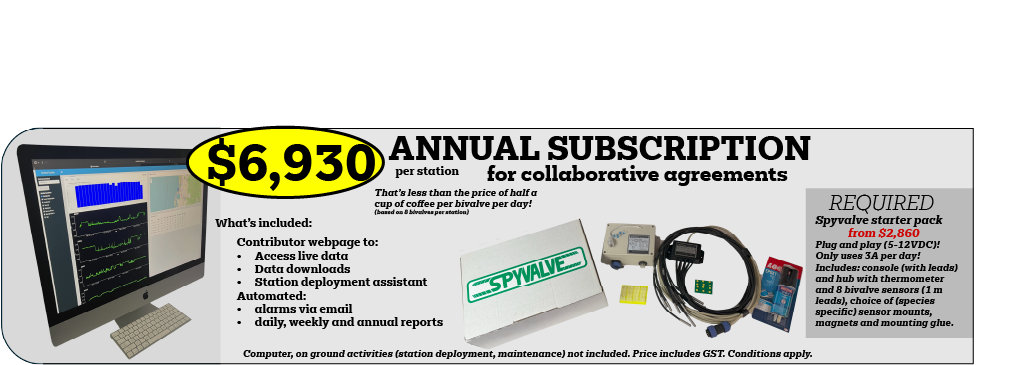Overview
Bivalves — mussels, oysters, scallops, and clams — are living sensors. As filter feeders, they continuously “taste” the water. When conditions are safe, shells stay open for feeding, breathing, and excreting. When they sense stress, they act fast: reject particles as pseudofeces or close their shells for protection.
Spyvalve turns this natural response into real-time environmental intelligence. Tiny sensors on shells track opening/closing behaviour; when all bivalves at a station close for several minutes, the system flags a probable pollution or stress event.
Why it matters
Traditional monitoring often misses critical moments. Fish kills are typically reported days after they occur because fish sink first and only float once decomposition gases form — by then, the cause is hard to trace.
Spyvalve provides early warning by detecting biological stress in real time — whether from harmful algal blooms (HABs), oxygen stress, temperature spikes, salinity shocks, known pollutants (e.g., nutrients, hydrocarbons, metals, pesticides), or a vast array of emerging and not-yet-identified chemical compounds.

Why bivalves?
It’s impossible to sample every parameter or anticipate every interaction. Bivalves integrate multiple stressors into a single biological signal — reflecting real impacts on fauna, not just numbers on a meter.
Applications
